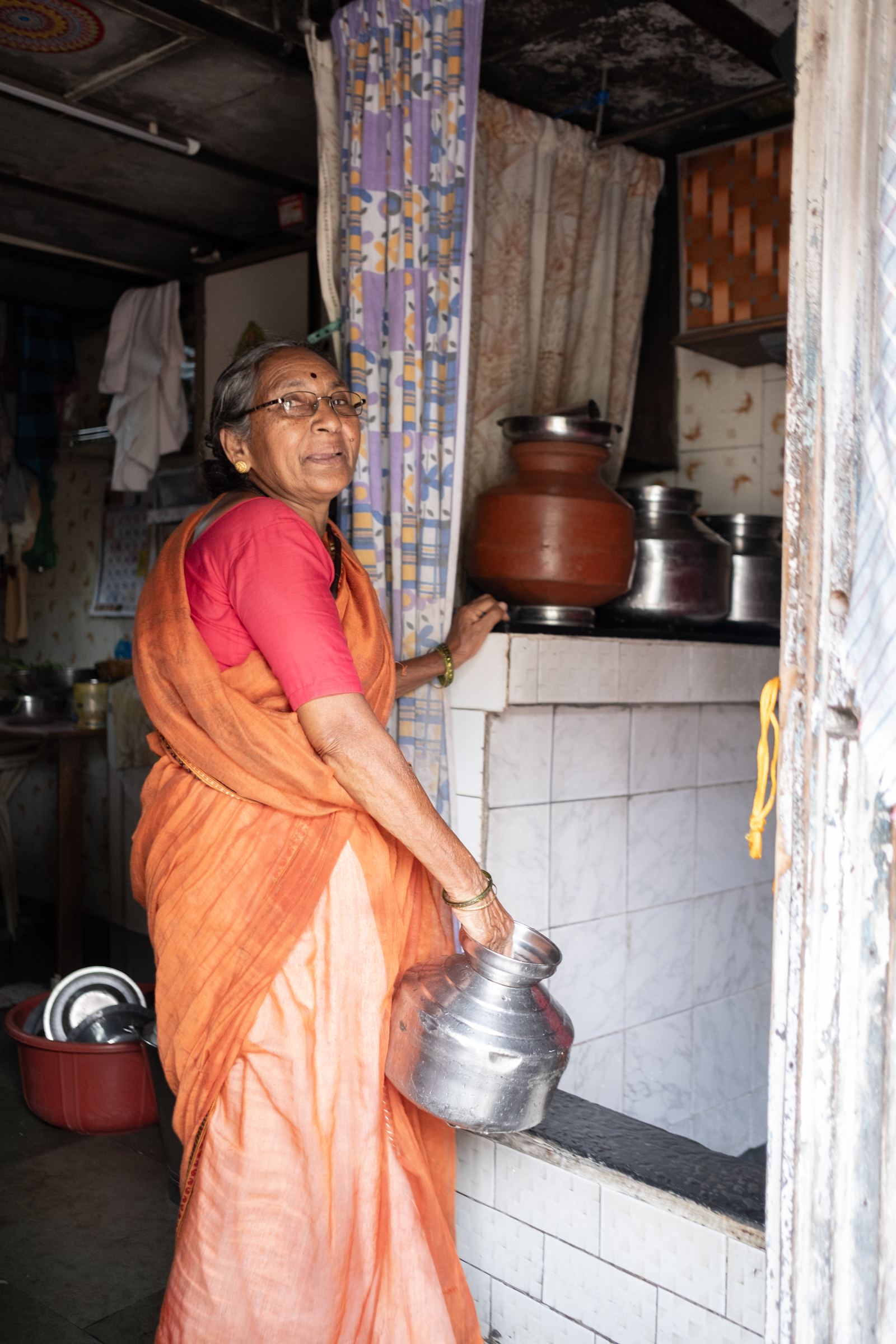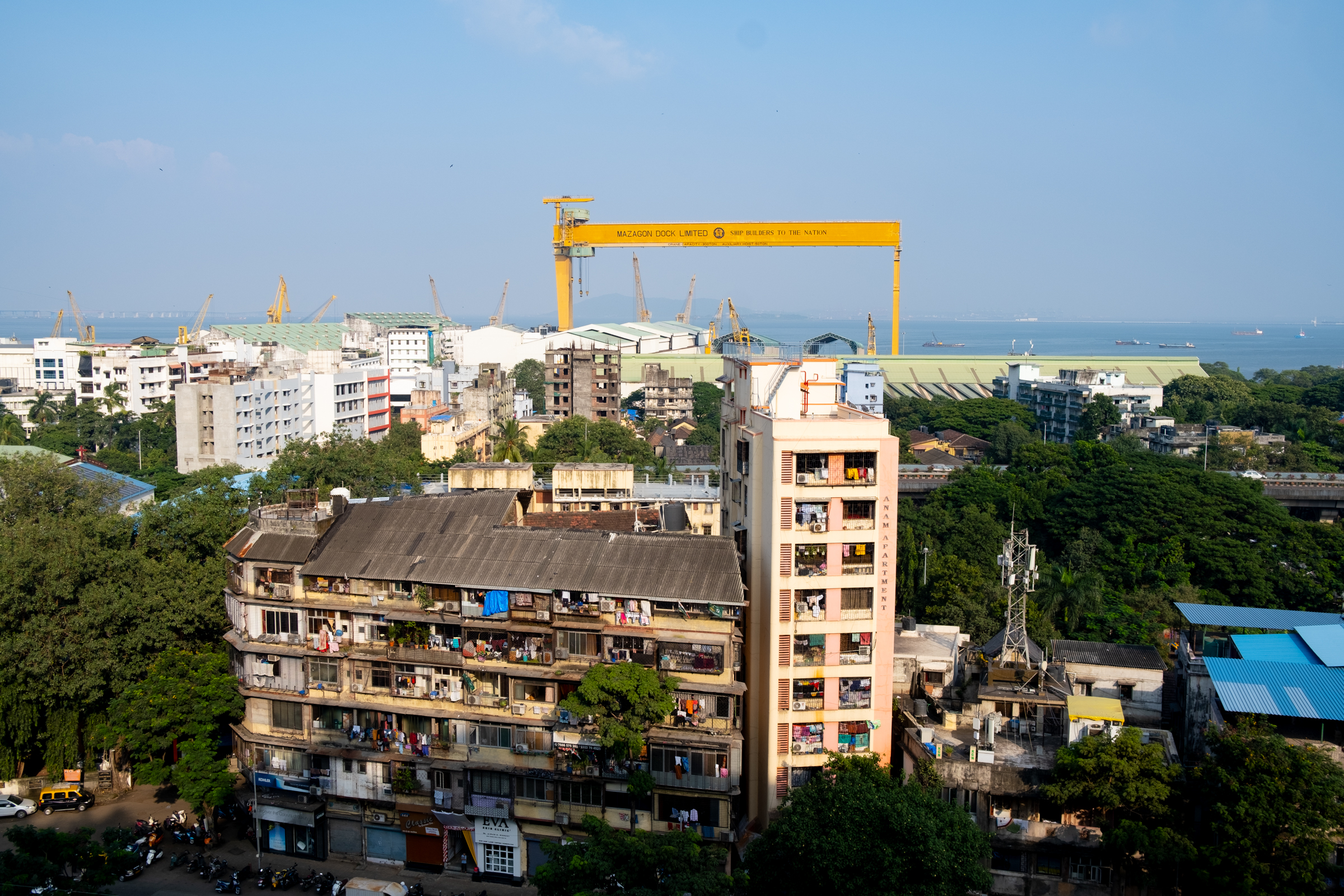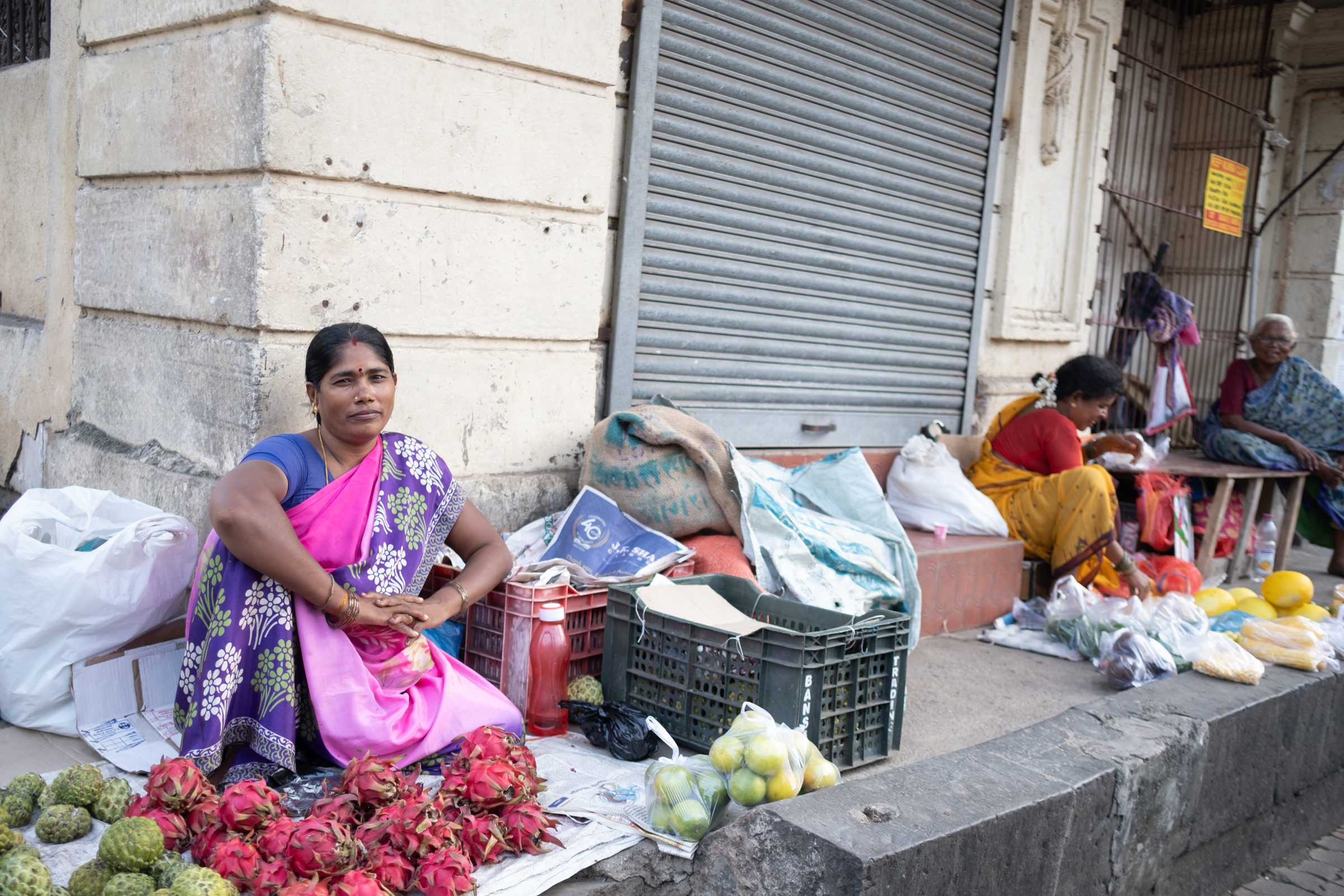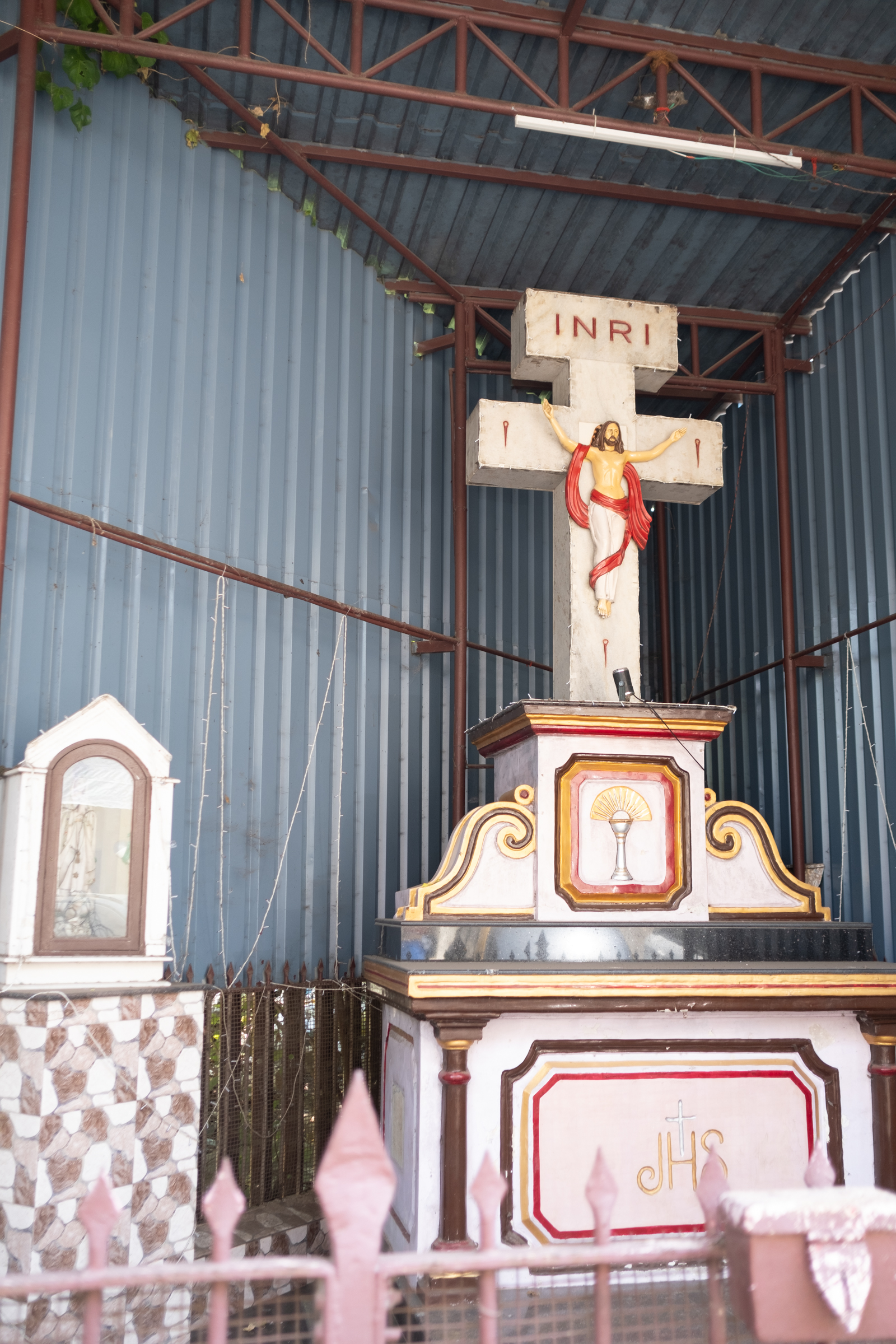Mazagaon: A visual walk-through
Mazagon Dock, one of India's leading shipbuilding dockyards, is situated along Mumbai's eastern seaboard. The Wadia family of shipbuilders established it in 1774. Adjoining the docks, Mazagon Koliwada is among the oldest Koli settlements in Mumbai. Mazagon is also a transport hub, which facilitates the inward and outward movement of sailors, workers, and migrants. It is home to a mix of communities, including Parsis, Muslims, East Indian Catholics, Jews, and others, who have lived here for generations. Architectural landmarks and heritage buildings pepper Mazagon, reflecting its cosmopolitan social fabric. Overall, Mazagon's unique blend of shipbuilding heritage, industrial history, and cultural diversity makes it a distinctive part of Mumbai's urban landscape.
Kaka Baptista Gardens on Mazagaon Hill is named after Joseph ‘Kaka’ Baptista, who was born in Matharpacady in 1861. He was elected mayor of Bombay Municipal Corporation in 1925. He was a barrister by qualification, and he practiced law at the Bombay High Court. He was also involved in politics and advocated for the rights of the East Indian community. Bal Gangadhar Tilak and Kaka Baptista were close allies during the Indian Home Rule Movement.
On top of Mazagon Hill, there were remnants of the Portuguese-era fort. The hill overlooks Mazagon harbor, and the fort protects it from piracy. The British destroyed the fort in 1881 and built an underground water reservoir on the hill. It was originally named after John Hay Grant, the Municipal Commissioner of Bombay from 1871 to 1881. Joseph 'Kaka' Baptista, a prominent figure in the East Indian community, later inspired the renaming.
Chawls provided affordable housing solutions for the working-class population. Typically, a chawl is a multi-story structure that has individual living units arranged around a central courtyard. The units open onto a running balcony, facilitating social interactions with neighbours. The residential unit may include a bedroom, sitting room, and kitchen, though washroom facilities are usually common.
Even though Mazagon was surrounded by sea, it was known for its freshwater. Before the days of municipally supplied tap water, there were numerous wells and tanks that provided drinking water. While some of these wells were privately dug within homes, others were open to the public. This covered well, for instance, is a private well located inside a Parsi mansion.
In 1916, the descendants of Nawab Ayaz supported the construction of a sizable tank on the site of a pyau (drinking waterspout) as a gesture of goodwill and public service. Horses and bullocks that pulled carts carrying cargo to the warehouses and dockyards had their own section of the tank. Afterwards, they filled the tank and turned it into a playground. It also has a submarine water tank.
A tailor operates a sewing machine on the ground floor of Khorshed Mansion. This building, located on Nawab Tank Bridge Road, is extremely narrow, and the shop stands in its wedged corner. The shop's floor space is barely a meter wide, sufficient to run a tailoring business.
Bungalows at Mazagon Koliwada have traditional architecture. They are usually one or two stories high, with protruding balconies held up by wooden brackets. Tiled roofs drain rainwater during the monsoon season. The open balconies flood the interiors with natural light and fresh air. A wooden staircase connects the upper levels, while the building entry opens onto the street.
A bicycle vendor is on Baker Lane, which links Hospital Lane and D'Lima Street. As the name implies, Baker Lane was home to numerous bakeries that provided dock workers with freshly made pao. People from various communities, regions, and faiths comprised the workforce. Every group had its own eating habits, but they all shared pao, or local bread.
Mazagaon has grown into an industrial area with numerous large and small businesses that support the shipbuilding sector. As stated in the sign over this shop's door, the alleyways surrounding Mazagaon dockyard are a hive of offices, workshops, factories, and warehouses offering a variety of fabrication and ship-repair services.
Just outside the Mazagaon Dockyards is a women-run eatery. There are several roadside restaurants in Mazagaon Koliwada, such as this one. They offer a range of seafood-based dishes that are typical Koli fare. Popular dishes include Bombil Fried (Bombay Duck), Kolambi Curry (Prawn), Sukka Curry (Dry), Khekda Masala (Crab), and Bangda Curry (Mackerel).
Shenaaz's tiny room at Bob Bungalow is where she feeds the local cats. Many cats live in Mazagon, where they patrol the fish markets and serve as useful pest deterrents. Despite their lack of domestication, the residents take care of the cats. The locals regard them as family, and they become close friends with them.
The residential units at Bob Bungalow have a single room, with the washroom in one corner. Only drawn curtains offer privacy in the washroom. The half-raised wall of the washroom is used to store water pots. The attic is used as an additional storage space. Bob Bungalow residential units feature two entrances, one facing the internal building corridor and the other facing the exterior, from which an external stairway serves as a shortcut.
Tracks on P. D'Mello Road are remnants of the Bombay Port Trust Railway Lines, which were laid in 1915 to transport goods from all the piers and docks to the warehouses, godowns (white building in the background), and storage facilities located along the P. D'Mello Road. This route was also used by the tramway, which began operations in April 1896 and continued until March 31, 1964, when Mumbai discontinued all tram services.
Mazagaon Koliwada, adjacent to the docks, is one of Mumbai's oldest Koli settlements, though not much of the historical village has survived in modern times. It is home to diverse communities, including Parsis, Muslims, East Indian Catholics, Jews, and others, who have lived here for generations. Architectural landmarks and heritage buildings pepper Mazagaon, reflecting its cosmopolitan social fabric.
The Gaondevi Temple on Mazagon Hill provides a view of the Mazagon Dock. In 1774, the Wadia family of shipbuilders established the Mazagon Docks, primarily for the construction of warships and submarines for the Indian Navy. This includes maintenance, upgrades, and modernisation of ships and submarines to extend their operational lives. Additionally, old naval vessels undergo repair and refit on the docks.
Vibrant murals along P. D'Mello Road vividly depict Mazagon's historical connection to the shipbuilding industry.
The 140-year-old Club of St. Anthony is a Goan club associated with Deussua village in South Goa district. These Goan clubs, known as kudds (or coors), offer affordable accommodation to Goan migrants residing and working in Mumbai. The Club of St. Anthony, located near Dockyard station on P. D’Mello Road, is among the few remaining kudds in Mumbai, most of which have closed due to a lack of patronage and occupancy.
The Koli community was mainly involved in fishing, though some Kolis were also cultivators. Typically, Koli women are responsible for drying and selling fish, while Koli men fish and distribute the day's catch. Koli women dominate the fish markets, handling the business operations.
Nawab Hyat (Ayaz) Khan's ancestors constructed a tank that inspired the name of Nawab Tank Road. Hyat worked for both Tipu Sultan and Hyder Ali of Mysore. During the Second Anglo-Mysore War, he surrendered the Bednore Fort to the East India Company. Following the war, the government shifted Hyat to Mazagon, where he lived with his family and received an annual stipend of four thousand rupees. The local Muslims called him 'Nawab' due to his affiliation with Hyder Ali.

With the day's fresh catch, fishermen ply their trade door-to-door. This practice has remained unchanged over centuries. The only noticeable change is replacing traditional cane baskets with plastic buckets.
The Mazagaon Masjid's entrance dates back to its establishment in 1890. Islam came to Mumbai through traders, saints, and preachers who arrived from various parts of the Indian subcontinent, as well as from foreign lands. The Bohras, the Khojas, and the Kutchi Memons dominated trade, business, and commerce. As a result of this mixed heritage, the Muslim population in Mazagon is diverse, with various sects building mosques, maqbaras, and dargahs in the area.
Mazagon features a mix of residential, commercial, and industrial structures that have changed ownership multiple times. Depending on their usage, buildings have undergone remodels and repurposes. For example, Bob Bungalow was built as a hospital but is now used as a residential building. A grand staircase greets visitors as they enter through the arched entrance. The current tenants live in units arranged on either side of the corridor.
Koli fishermen are sorting the day’s catch at Bhaucha Dhakka jetty. Due to extensive land reclamations, Kolis had to shift their fishing activities further south of the Mazagon dockyards. They built the Bhaucha Dhakka Jetty in 1979 for their own use. The jetty handles ferry services and maritime operations for the commercial fishing industry.
Ownership and management of the Catholic churches began to diverge after the Portuguese gave the British control of the Bombay Islands. ‘Descendentes’ were Portuguese descendants, while ‘naturalis,’ including the Kolis, came from converted natives. The descendants refused to let the naturalis inside Gloria Church. The naturalists objected and urged the government to give them land in Mazagon so they could build their own church. The inscription on the wall indicates that they constructed Our Lady of the Rosary Church on this land in 1794.
The Kolis were among the first people to live on the Bombay Islands. Groups of people who worked in occupations that supported the regional economy populated the area, in addition to the Kolis. These included the Agris and Kunbis (paddy growers), the Bhandaris (toddy tappers), and the Mitha Agris (saltpan workers). However, as times changed, only the Kolis continued to engage in their traditional profession and have maintained a distinct cultural identity.
The Gaondevi Temple pays homage to Mazagaon's village deity (goddess). The Koli community reveres a foot imprint they believe the goddess left, seeking protection for fishermen on the high seas. The current temple sits on Mazagaon Hill, but this is not its historical location. During Navratri, the temple comes to life with the ritualistic transport of the Gaondevi across Mazagon.
Gloria Church Cross, located near Hospital Lane, is a remnant of the former Gloria Church in Mazagon. Built in 1548 as a private chapel for Captain Antonio Passao, the church underwent demolition in 1596 to make room for a new church. In 1810, they demolished and rebuilt this church. The Bombay Port Trust Railway designated the site where Gloria Church and its parish house were to be purchased. In 1910, the Bombay Port Trust dismantled the old church after agreeing to compensate the Diocese with two lakh rupees. In 1913, the Gloria Church in Byculla underwent reconstruction and reopened.
In the 1850s, Chinese immigrants began to arrive in Mumbai. These Chinese immigrants originated in Canton, a southern Chinese port city, and were residents of the See Yup Koon neighborhood. Most of them were sailors who worked on ships traveling between China and India. Around the beginning of the 20th century, Mazagaon saw the founding of Chinatown. A remnant of Chinatown is Kwan Kung Temple, a Chinese temple located at 12 Nawab Tank Road.
On November 12, 1925, Dockyard Road opened, slicing a portion of Mazagon Hill apart. It is part of the suburban railway network and falls under the Harbour Line. On December 10, 1910, a double line from Kurla to Reay Road, passing through Sewri and Wadala, established the Harbour Line. An elevated corridor from Reay Road to Sandhurst Road connected the Harbour Line to Victoria Terminus (CSMT) in 1925.
There are multiple stories regarding the origin of Mazagon’s name. The popularly accepted story suggests it came from Matsyagrama (a fishermen’s village), which in the local language became Machch-gav. The Portuguese called it Mazaguao, while the English referred to it as Massegoung, which they shortened to Mazagaon. Another simpler theory states that it originated from the Marathi phrase 'maza gaon,’ which means 'my own village.’




























